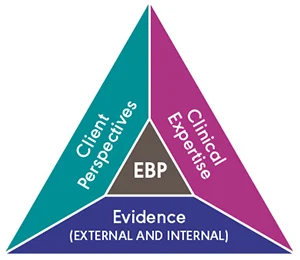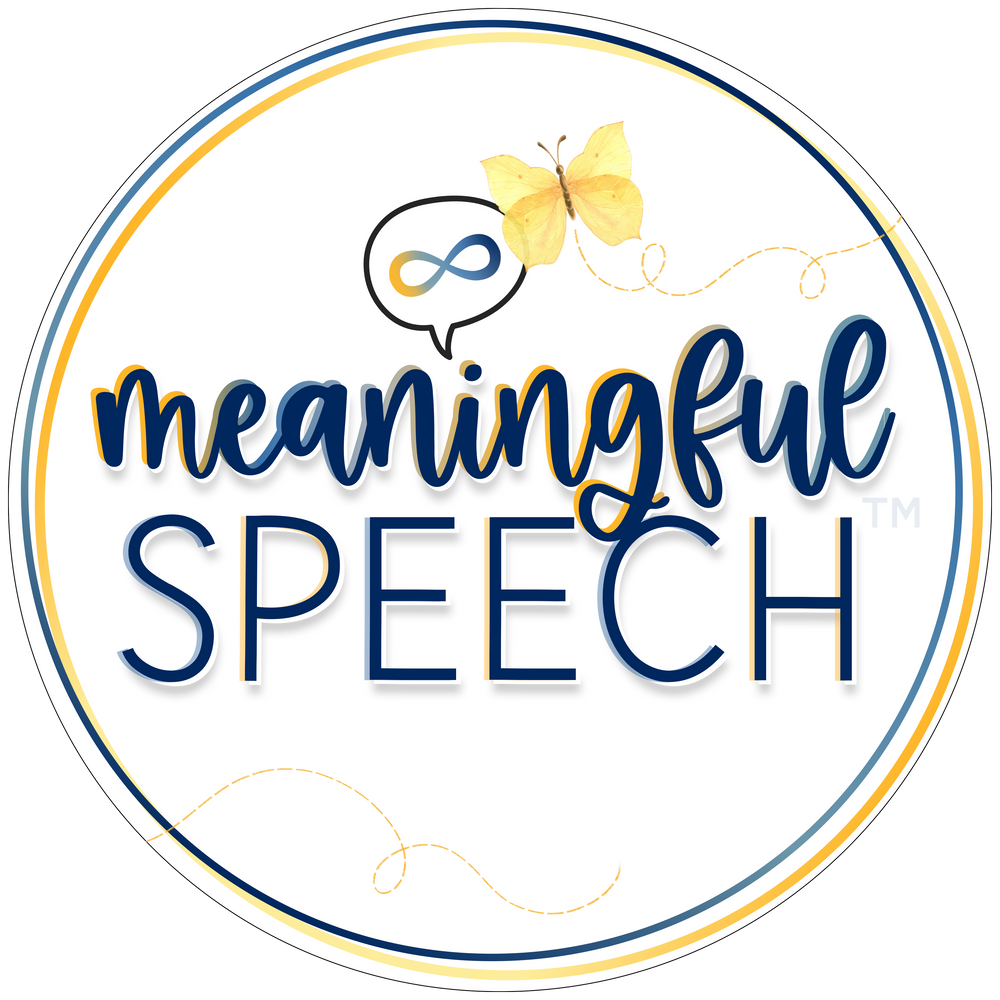What social communication goals do we recommend?
May 03, 2023
When gestalt language processors start moving into the later stages of gestalt language development (Stages 4+), we can start focusing on goals outside of expressive language. We often get questions asking what kind of social communication goals we recommend for later stage GLPs. Since many gestalt language processors are Autistic and therefore, neurodivergent, keep in mind that these goals should be neurodiversity-affirming. Our goal should not be for the child to appear more neurotypical. Traditional social communication goals such as conversational turn-taking, eye contact goals, size of the problem, "functional" play goals, whole-body listening, expected vs. unexpected, etc. push neurotypical standards. So what do we recommend?
Listen to Autistic voices
First and foremost, we recommend listening to Autistic voices. There are many Autistic advocates speaking out against traditional "social skills therapy" and goals as harmful. We cannot discount these voices and their advocacy just because something might claim to be "supported by research" or because we may have been practicing this way, using these goals for a long time. It's important to remember that client perspectives are an equal part of evidence based practice.

Evidence-Based Practice (ASHA, n.d.)
Self-Advocacy
Children cannot advocate for the tools, accommodations, unique sensory, communication, listening and/or learning styles/needs if they don't understand them or know they exist. We must teach them. Not as any better "better" or "correct" but as equally valid. Allow them to identify the tools, accommodations, their unique needs and the tools they benefit from then we can focus on how they can advocate for these to allow them to access all areas in their life (school, home, etc.).
Teach The Double Empathy Problem
Teach children about The Double Empathy problem which refers to "disjuncture in reciprocity between two differently disposed social actors" who hold different norms and expectations of each other, such as is common in autistic to non-autistic social interactions." With different dispositional outlooks and personal conceptual understandings, interactions involving autistic and non-autistic (Allistic) people are susceptible to frequent misunderstandings. It is a “double problem” as both people experience it (Milton, 2018). Teaching all children about the Double Empathy Problem allows them to understand why breakdowns in communication and understanding might occur.
Teach The Spoon Theory
The theory was created by Christine Miserandino and it is the idea that those with chronic conditions, disabilities, etc. wake up each day with a limited number of "spoons" (energy). Every activity throughout the day takes a certain amount of spoons. The amount of spoons each activity takes is different for everyone and depends on factors such as sensory needs, executive functioning, social, physical activity, language, etc. Therefore, each individual must always be aware of how much energy they have and what activities they "spend their spoons" on so they do not run out of spoons completely. Continuously overexerting and running out of spoons can lead to chronic fatigue and burnout.
Your goals might be for the client to identify their energy level during certain activities throughout the day, determine the amount of “spoons” these activities spend, and identify regulatory strategies, ways to advocate when they are overexerting themselves, and activities that add spoons.
Example: Johnny started his day with 8 spoons. Today he needs to go to a doctor's appointment, head to school, and then needs to head to speech therapy after school. This will spend more spoons than Johnny has. If Johnny continues to overexert himself like this, it might lead to burnout and chronic fatigue.
Teach Communication Style Differences/Preferences
Teaching all children (not just neurodivergent children) about various communication styles helps them identify and advocate their preferred style of communicating and accept styles that are different from theirs. No style is taught to be better or "correct". This also helps all children understand why breakdowns in interactions might occur.
For example, some people prefer eye contact whereas others find it uncomfortable and/or painful.
Teach Energy & Emotional Regulation
Teach children to identify different body sensations, energy levels, and signs of dysregulation within their bodies. Introduce different sensory-motor or emotional regulation strategies and allow the child to reflect on how these different strategies impact their energy or emotions. We want to make sure these strategies are affirming the child and their unique sensory, communication, listening and learning styles/needs. There are great resources out there created by neurodivergent individuals. Some suggested resources include:
Teach Problem Solving
When teaching problem solving, we want to focus on identifying best possible solutions and outcomes that work for them and/or others, rather than focusing on solutions or outcomes that push neurotypical standards.
Example: If Lucy finds eye contact to be uncomfortable and painful, the best solution to a problem with an adult in her life expecting eye contact would not be to force Lucy to make eye contact but might be to focus on ways she can self-advocate and educate about preferred communication styles.
Teach Perspective-Taking
Perspective taking is perceiving another person's thoughts and feelings in a particular situation. We want to ensure we are focusing on all perspectives (both neurodivergent and neurotypical) in a situation.
Example: Using the situation from above, Lucy’s perspective is that eye contact is uncomfortable and painful. She cannot effectively listen and process information when forced to make eye contact because that is where all of her “spoons”/energy goes rather than the conversation. The adult’s perspective might be that Lucy’s lack of eye contact is because she doesn’t care about the situation. The adult may have never been informed that some people feel eye contact is uncomfortable or painful.
Want to learn more in-depth information about how to support gestalt language processors?
- There are many free podcasts, webinars and articles to get you started. A comprehensive list of resources can also be found on our website and Communication Development Center's website.
- Consider taking the Meaningful Speech course to learn more about how your child or client processes language, how you can help support them from echolalia to self-generated (original flexible) language, child-led therapy, and neurodiversity-affirming practices.
- Consider taking our AAC + Gestalt Language Processing course. It will teach you how to identify, evaluate and support gestalt language processors who use AAC or who you think might benefit from AAC.
- Look for a speech-language pathologist (SLP) who "gets it" and can help you in supporting your child's language development. Check out our registry for SLPs who understand gestalt language processing and child-led therapy.
